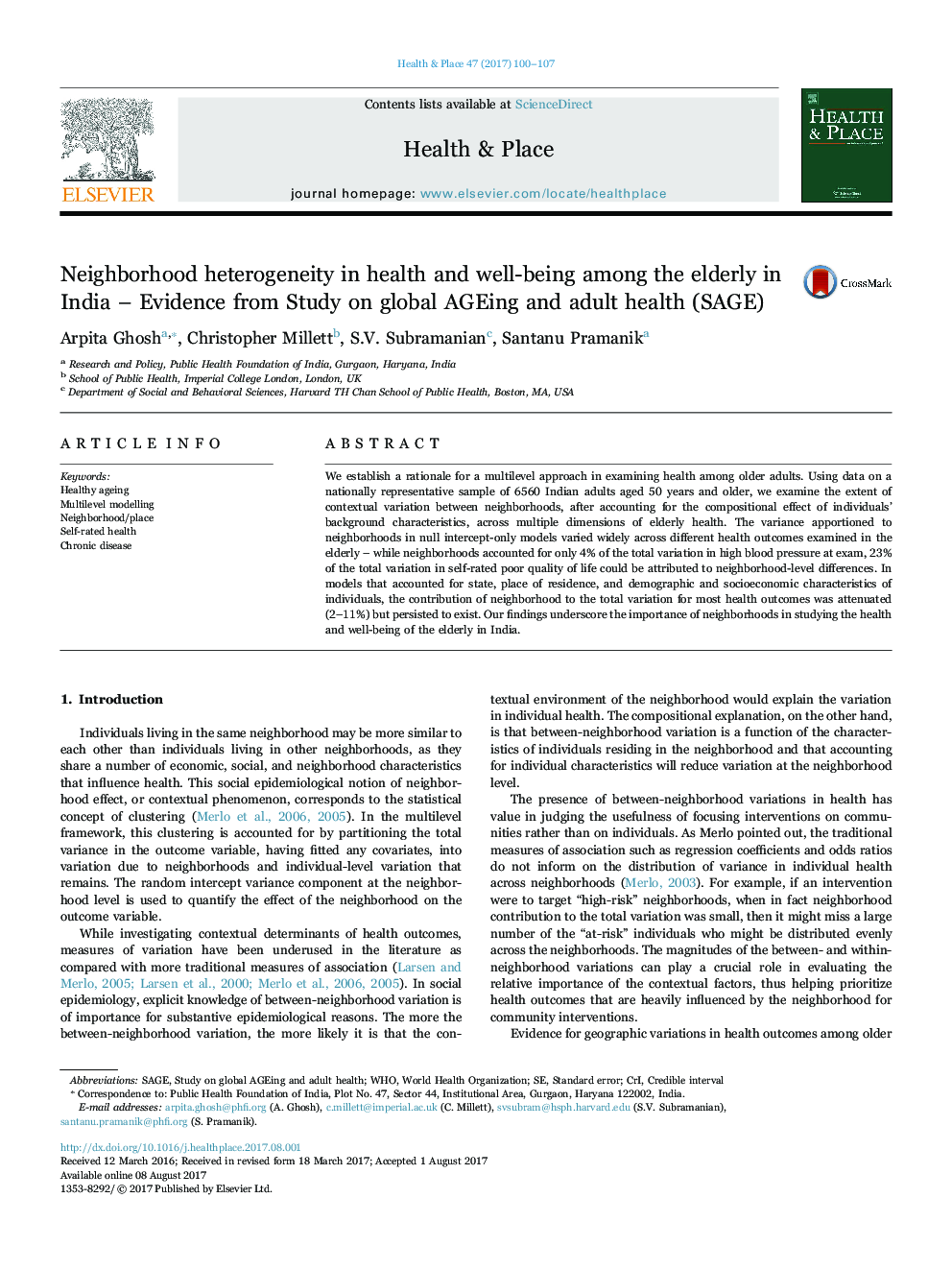| Article ID | Journal | Published Year | Pages | File Type |
|---|---|---|---|---|
| 5114777 | Health & Place | 2017 | 8 Pages |
Abstract
We establish a rationale for a multilevel approach in examining health among older adults. Using data on a nationally representative sample of 6560 Indian adults aged 50 years and older, we examine the extent of contextual variation between neighborhoods, after accounting for the compositional effect of individuals' background characteristics, across multiple dimensions of elderly health. The variance apportioned to neighborhoods in null intercept-only models varied widely across different health outcomes examined in the elderly - while neighborhoods accounted for only 4% of the total variation in high blood pressure at exam, 23% of the total variation in self-rated poor quality of life could be attributed to neighborhood-level differences. In models that accounted for state, place of residence, and demographic and socioeconomic characteristics of individuals, the contribution of neighborhood to the total variation for most health outcomes was attenuated (2-11%) but persisted to exist. Our findings underscore the importance of neighborhoods in studying the health and well-being of the elderly in India.
Keywords
Related Topics
Health Sciences
Medicine and Dentistry
Public Health and Health Policy
Authors
Arpita Ghosh, Christopher Millett, S.V. Subramanian, Santanu Pramanik,
